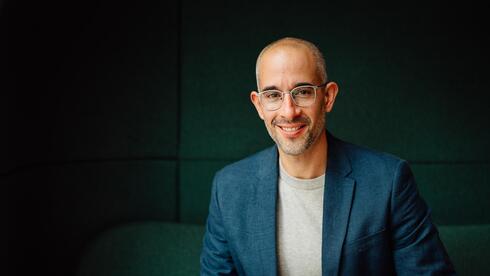
Opinion
Is it time to reconsider PSA tests for Prostate Cancer?
“The treating physician should determine what is best for the patient based on his unique age, family history, health, lifestyle, race, ethnic background, and other factors,” writes Itay Barnea, CEO of BioProtect
What is common for Ben Stiller, John Kerry, Rod Stewart, Robert De-Niro, Warren Buffett, Gadi Eizenkot, and Ehud Olmert?
They all were diagnosed with prostate cancer and shared their experience dealing with the disease.
If you have been diagnosed with prostate cancer, or if you are living with the side effects of prostate cancer treatment, you are not alone. Numerous men all around the world are diagnosed with this common cancer, which affects about one in nine men. Prostate cancer is the most common non-skin cancer diagnosed in men, and the second leading cause of cancer deaths in men, after lung cancer, with more than 1.4 million men diagnosed yearly globally.
However, is this a real disease that eventually will find any man that will live enough years? Or do we just test too many men without any real need?
Screening for prostate cancer is a long-time contentious issue in debate. Should healthy men, with no symptoms or family history of prostate cancer, get a prostate-specific antigen (PSA) test and treatment right away if a tumor is found?
For more than 30 years, the PSA test has been the gold standard in prostate cancer screening. This simple, widely available blood test measures how much prostate-specific antigen is in the blood. The PSA test may identify fast-growing cancers that can spread to other parts of the body and would benefit from treatment. It may also find slow-growing cancers that are unlikely to be harmful. Some people without any symptoms of prostate cancer do choose to have regular PSA tests. But PSA tests are not perfect. PSA levels can be elevated when cancer isn't present and not elevated when cancer is present.
Proponents of routine PSA testing say it is the best screening tool for detecting prostate cancer early when it is most treatable. But there are those who argue that it prompts many newly diagnosed men to seek invasive treatments that can cause many side effects, including incontinence and impotence, although up to 80% have low-risk tumors that will never be life-threatening. For them, the best option is active surveillance and watchful waiting where doctors monitor patients closely for signs that their cancer is advancing before treating it. In active surveillance, regular follow-up can include blood tests, rectal exams, and prostate biopsies to monitor cancer progression. Cancer treatment such as surgery or radiation may be suggested if tests show that cancer is progressing.
The formal clinical guidelines for prostate cancer screening and treatment, from the different relevant clinical societies, are changing back and forth, adding fuel to this debate. In the early 2000s, following two major meta-analysis studies (the European ERSPC and the American PLCO), the US Preventive Services Task Force (USPSTF) published guidelines against routine PSA tests. However, due to revisions of the leading studies and new data published, the USPSTF removed this recommendation in 2018, while the parallel Canadian task force, for example, kept its objection.
Similar to the world, prostate cancer is the third most prevalent cancer disease in Israel and the most prevalent cancer among men in Israel. In 2018, 2,713 Israeli men were diagnosed with prostate cancer and about 416 died of the disease. 30,278 men diagnosed with prostate cancer since 1990 live in Israel today, 10,057 of which were diagnosed in the last five years.
By international comparison, in 2020, Israel was ranked 58 in morbidity and 143 in mortality. This huge difference between morbidity and mortality factors and a high survival rate of 97%, may suggest that in Israel as well, there is a tendency of over-screening.
The global prostate cancer therapeutics market size is driven by the rising numbers of prostate cancer numbers. The global market was valued at $24.9 billion in 2021, and it is predicted to exceed $24.9 billion by 2030. The market growth can be attributed to the increasing cases of prostate cancer. The rapid technological advancements in the field of oncology have led to the early diagnosis of prostate cancer among patients. This factor is likely to serve as the key factor to boost notable growth opportunities in the market. There has also been a significant increase in investment by the private and public sectors both in Israel and the world.
I believe that any individual man requires a personalized, patient-centered approach to screening and treatment that one-size-fits-all screening guidelines don’t consider. The treating physician should determine what is best for the patient based on his unique age, family history, health, lifestyle, race, ethnic background, and other factors.
If indeed, the patient has a medium or high-risk cancer, the early detection may benefit him. Up to 35% of patients undergoing prostate radiation therapy will experience radiation side effects of rectal toxicity such as rectal pain & bleeding, chronic diarrhea, urinary urgency & incontinence, cystitis, proctitis, and erectile dysfunction. For some of them, the side effects will be chronic and greatly affect their quality of life.
Itay Barnea is the CEO of BioProtect, which produces biodegradable balloons for safe radiation therapy, and an Almeda Ventures portfolio company.















